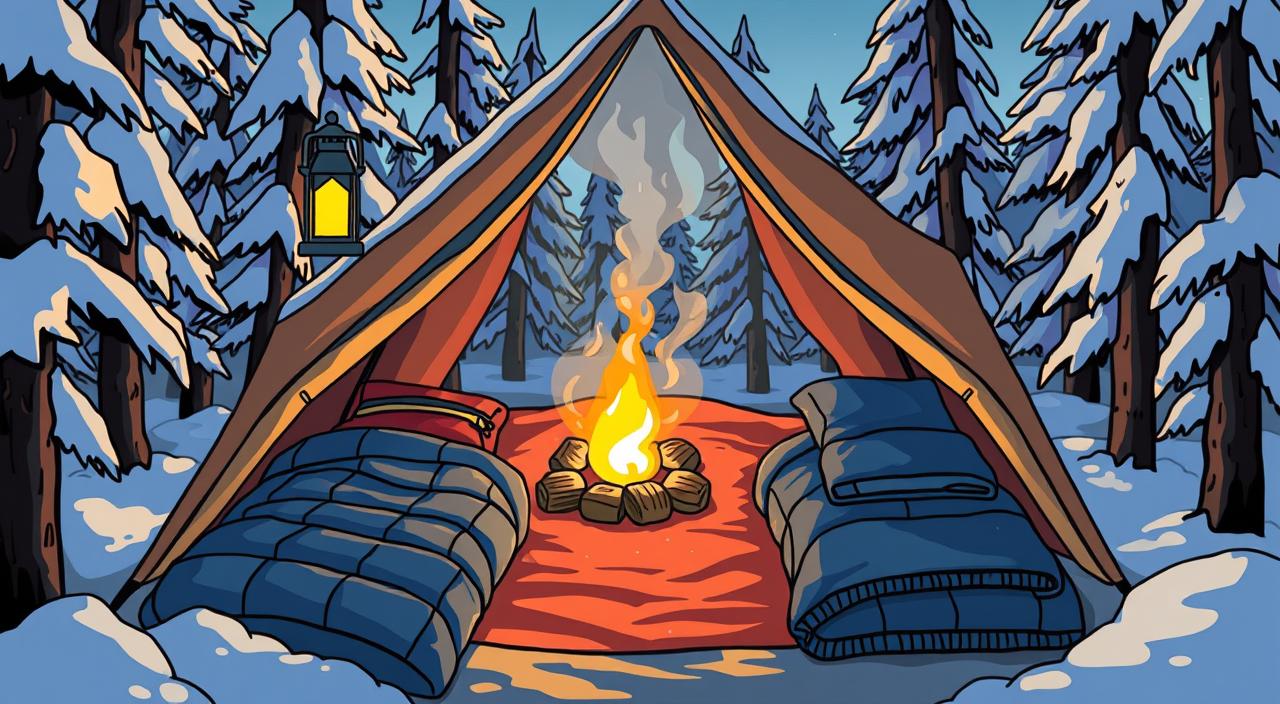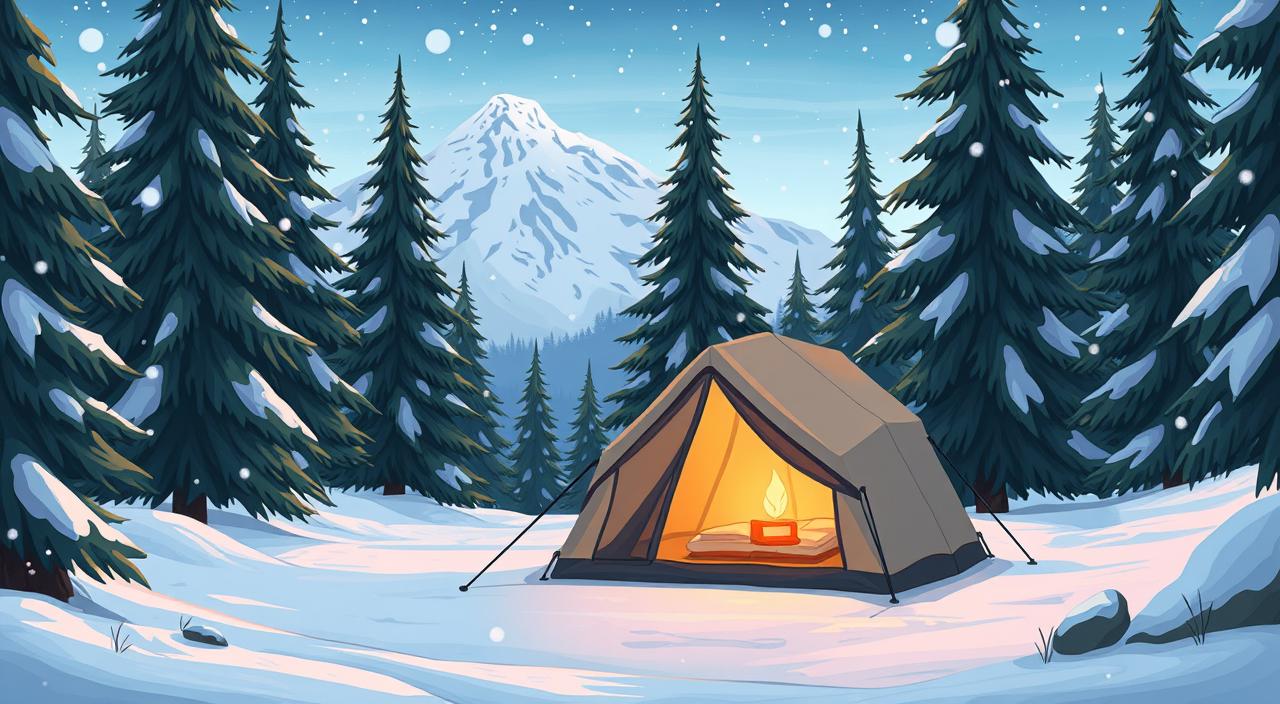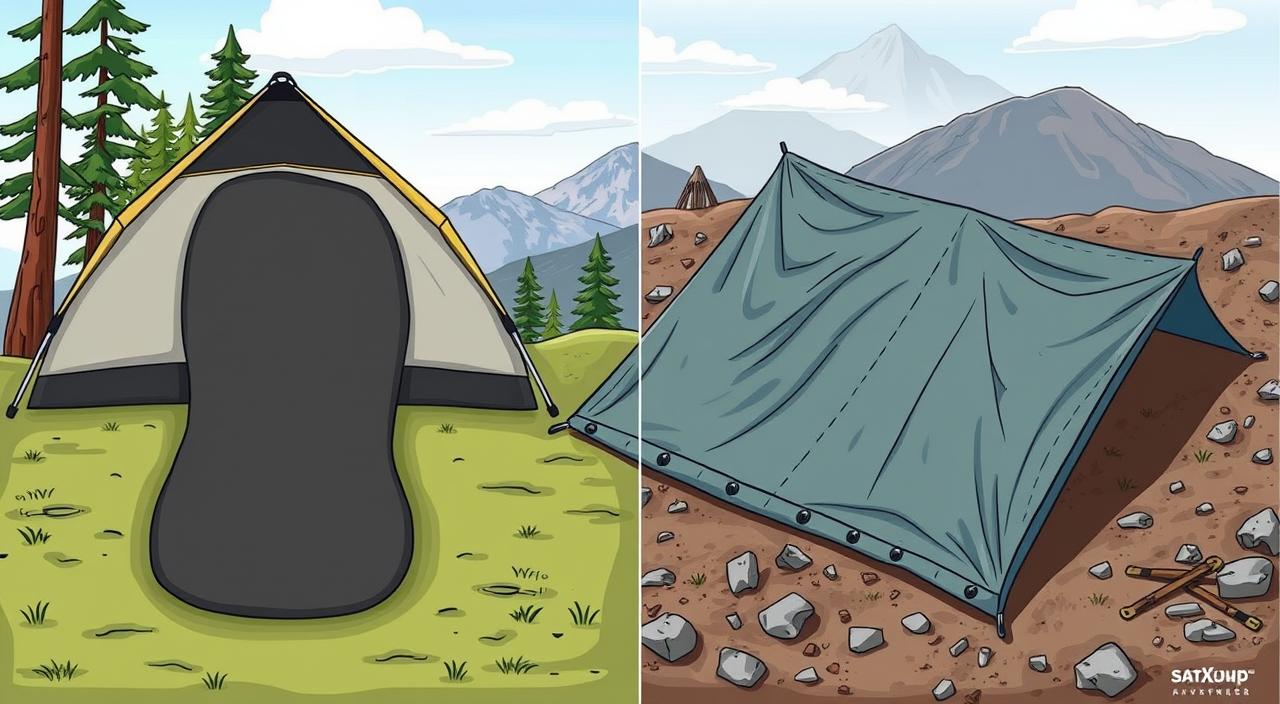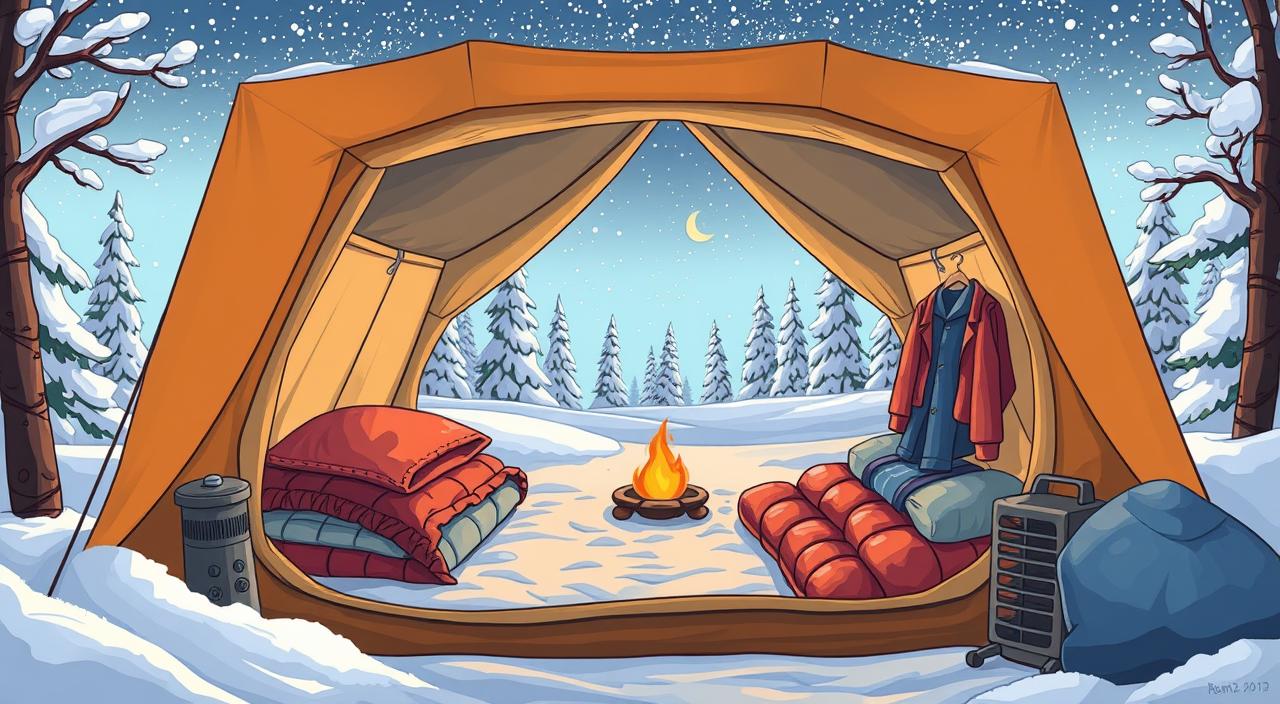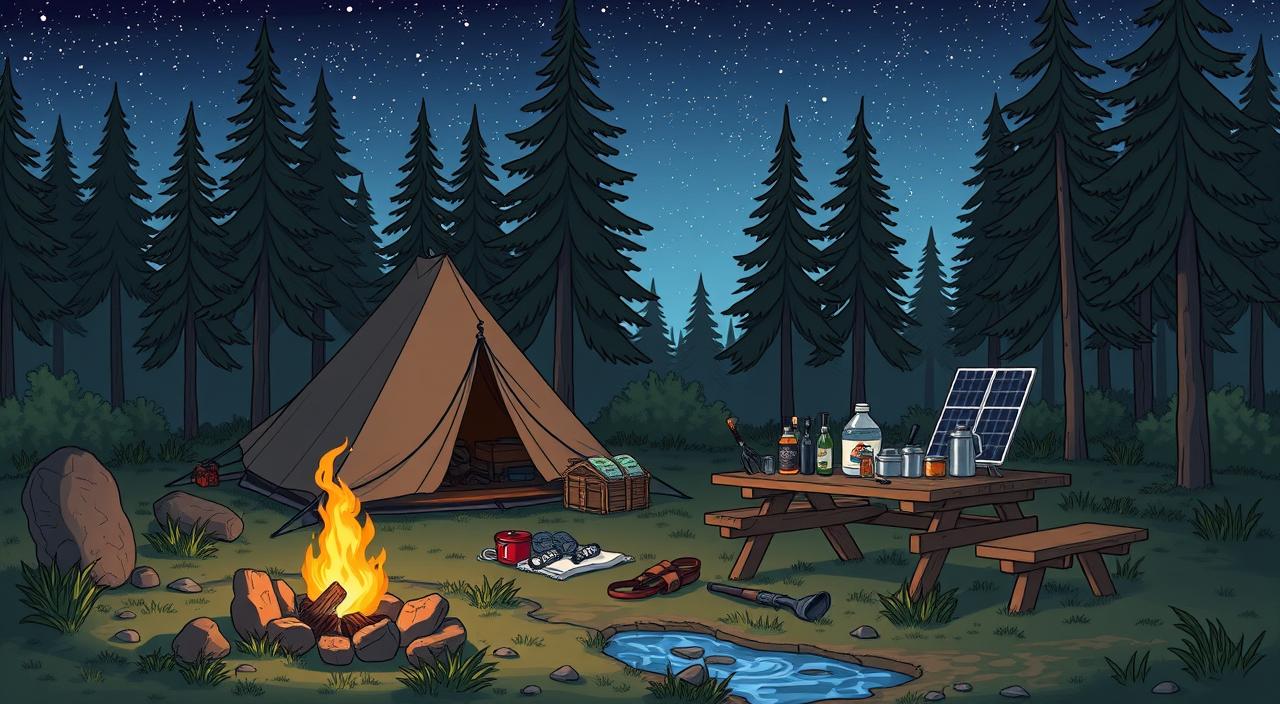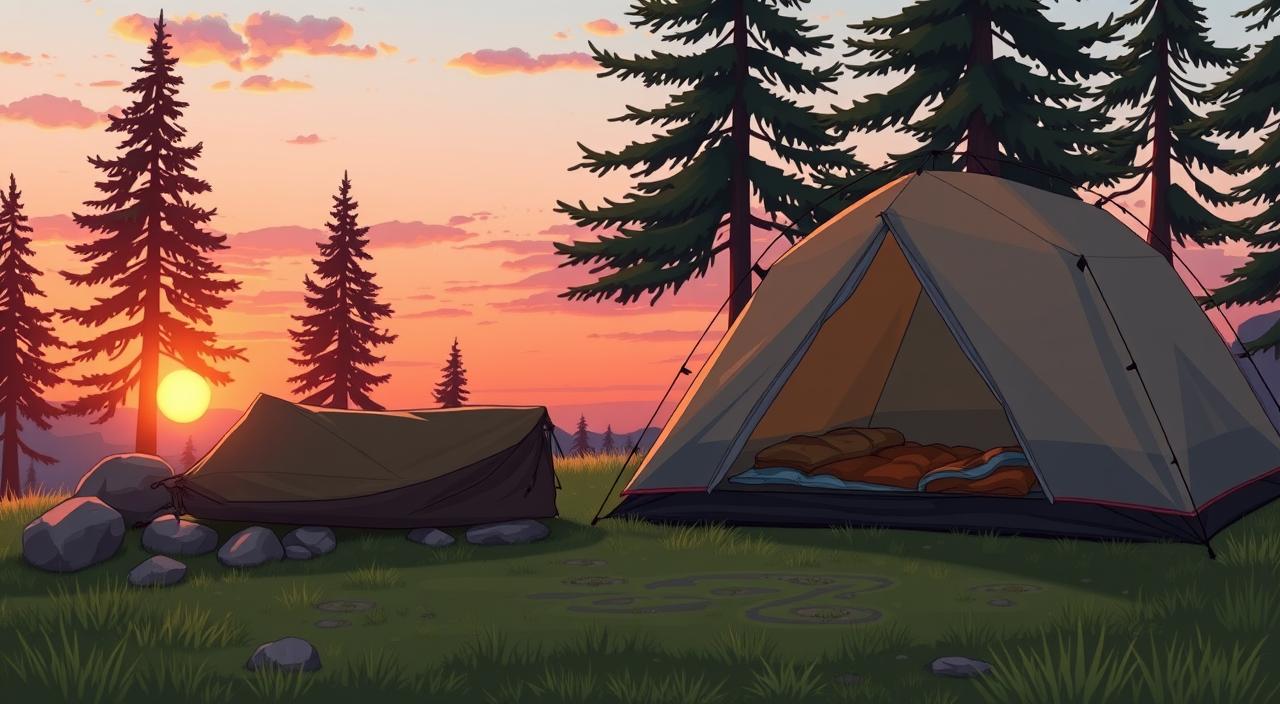
Disclaimer: This post may contain affiliate links. As an Amazon Associate, we earn from qualifying purchases.
Ever thought about if a bivy sack could change your outdoor adventure? Both bivy sacks and tents have their own perks for camping. This choice is key for those who love ultralight camping and backcountry adventures. We’ll explore the world of bivy sacks and tents to help you pick the best for your next trip.
Key Takeaways
- Bivy sacks are popular among solo adventurers and elite mountaineers for their lightweight design.
- Outdoor Research employees found bivy sacks to be the most comfortable and social way to sleep outside.
- Bivy sacks are ideal for solo trips, saving space without sacrificing comfort.
- These shelters encourage socialization, as campers can interact rather than retreating to separate tents.
- Advanced technology in bivy sacks offers waterproof protection while minimizing condensation issues.
- Some models provide headspace for stargazing, making them versatile for various camping experiences.
- Bivy sacks are durable options in bad weather or emergency situations, surpassing traditional tents.
Introduction to Outdoor Shelters
Choosing the right outdoor shelter is key for a great camping trip. There are many options, each with its own benefits for different needs and likes. Knowing about these shelters helps you pick the best one for your adventure.
When picking an outdoor shelter, think about how long you’ll be camping, the weather, and what makes you comfortable. For those who like to travel light, ultralight tarps and bivy sacks are great. A lightweight tarp can cost about $60-80 and weigh just one pound. Or, you can find a cheaper tarp for $10 or less, but it might not last as long.
For groups, a 10 x 12 foot tarp can shelter up to five people. Tarps are also very light, which helps keep your pack from getting too heavy. They’re often much lighter than tents, especially for groups, which is great for hikers who like to keep things simple.
Choosing the right outdoor shelter makes your camping trip better. Knowing about the different types helps you find the perfect one for your next adventure. Whether you prefer the lightness of bivy sacks or the room of tents, you’ll make a good choice.
What is a Bivy Sack?
A bivy sack is a key item for hikers who want a simple and light shelter. It’s made from waterproof and breathable materials. This means it keeps you dry and lets air in, unlike heavy tents.
It has a zippered opening and sealing closures to keep moisture out. This makes it a great choice for outdoor adventures.
Design and Features of Bivy Sacks
Bivy sacks are small and perfect for solo hikers. They’re often used with the Outdoor Research Alpine Bivy because they’re good in windy weather. They’re also easy to set up and take down, which is great for hikers.
Many bivy sacks use breathable materials to prevent condensation. But, some people find they get too cold in the cold weather.
Best Uses for Bivy Sacks
Bivy sacks are great for ultralight backpacking and emergencies. They work best on clear nights or as a backup when the weather is good. They’re good for summer or dry weather but not for rainy trips.
Here are some reasons why people like them:
- Quick and easy setup in tricky spots
- Perfect for short stays
- Carry less weight for ultralight camping
- Great for solo trips
Even with their downsides, bivy sacks are popular for certain types of camping. They offer a cozy spot to rest after a long day. Knowing how to use them can help you plan better for your outdoor trips.

What is a Tent?
A tent is a key shelter for camping, keeping you safe from the weather. There are many types of tents, from ultralight ones for solo campers to big ones for families. Knowing about these options helps pick the right one for your trips.
Tent Varieties and Their Functions
Looking at different tents, think about what you need for your camping trips. Here are some common types:
- 1-Person Tents: These are light and small, great for solo ultralight camping.
- 2-Person Tents: They give you a bit more room for your gear and are still easy to carry.
- Family Tents: Made for big groups, they have lots of space for living and sleeping.
- 4-Season Tents: These are for extreme weather, handling snow and strong winds.
- Crossover Tents: These tents are good for both casual and backpacking trips, being versatile.
Advantages of Using a Tent
Tents have many benefits because of their design. They give you more:
- Space: You can sit up, relax, and keep your gear organized.
- Weather Protection: They stand up better to wind and rain than bivy sacks.
- Versatility: They’re great for different weather, making sure you stay comfortable.
Tent vs Bivy for Different Weather Conditions
Tents are better at keeping you safe in bad weather than bivy sacks, especially in wet or cold places. Think about these things:
| Condition | Tent | Bivy Sack |
|---|---|---|
| Heavy Rain | Great protection, often with extra covered areas. | Hard to get into; can get wet inside. |
| Snow | Strong tents can handle snow. | Not much room and can be hard to move around. |
| Wind | Stable in wind and less chance of it falling down. | More likely to be blown around. |

Key Considerations: Weight and Packability
When planning your next outdoor trip, think about the weight and how easy it is to carry your gear. Knowing the differences between bivy sacks and tents is key, especially if you love to travel light.
How Bivy Sacks Compare in Weight
Bivy sacks are known for being super light. They usually weigh between 1 and 2 pounds. If you’re looking for something even lighter, ultralight options can be as little as 4.5 to 7.5 ounces.
This weight consideration makes them great for those who prefer to carry less. They also keep you warmer, adding about four to eight degrees of warmth on cold nights.
Bivy sacks are also super easy to pack. They take up very little room in your backpack, helping you save space and weight. Adding a bivy sack to your setup with a quilt and tarp can save you an extra 5 to 6 ounces.
Weight Considerations with Tents
Tents are usually heavier than bivies but can still be quite light. A one-person tent can weigh as little as 2.5 pounds. Picking a tent with a high waterproof rating is important for staying dry in the rain, a key weight consideration.
Tents have more parts but offer more room to move around, store your gear, and stay comfortable. Bivy sacks are great for harsh weather but might feel too small if you’re in them for a long time. The best choice depends on what you need and how you like to adventure.

| Feature | Bivy Sacks | Tents |
|---|---|---|
| Weight Range | 1 – 2 pounds (0.45 – 0.9 kg) | 2.5 pounds and above |
| Ultralight Options | 4.5 – 7.5 ounces (0.13 – 0.21 kg) | N/A |
| Packability | High; compact and easy to pack | Variable; often bulkier |
| Internal Space | Minimal; restricts movement | More room for gear and activities |
| Waterproof Rating | 1500 mm HH | 5000 mm HH and above |
Camping Comfort: Bivy Sack vs Tent
Choosing between a bivy sack and a tent depends on space, movement, and sleeping comfort. Each has its own pros and cons that affect your camping experience. Knowing how they compare can help you pick the right one for your next trip.
Space and Movement Inside the Shelter
Tents give you more room to sit up, change clothes, and store gear. This extra space makes camping more comfortable, especially on long trips. Bivy sacks are light and easy to carry but don’t let you move much because they’re small. Solo campers like their agility in places where tents won’t work, but they find it hard to change clothes or manage gear in them.
Sleeping Comfort: A Comparison
Tents are better for sleeping comfort. They let in more air and can hold thicker sleeping pads for a comfier sleep. Bivy sacks feel secure and keep you dry, but can get stuffy and wet in humid weather. Many campers prefer tents for longer trips because they’re more comfortable and versatile.
| Aspect | Bivy Sack | Tent |
|---|---|---|
| Weight | About 8 ounces | Starts at approximately 12 ounces |
| Space | Limited, ideal for solo trips | More spacious, great for multiple campers |
| Comfort | Good for quick setups but can feel restrictive | Better air circulation and room for gear |
| Weather Protection | Effective in emergencies but may have condensation issues | Generally superior for varying weather conditions |
Weather Protection: Understanding Your Options
When you go outside, knowing how to protect yourself from the weather is key. You need to decide between a bivy sack and a tent. Think about how well they handle wind, keep out moisture, and adapt to different weather.
Wind Resistance and Stability
Bivy sacks are good at fighting wind, but tents are better at staying stable in strong gusts. Light tents are great for storms because they can stand up to harsh weather. Bivy sacks have their own perks, like using natural barriers to block wind. Think about these points to pick the best gear for your trip.
Condensation Issues in Bivy Sacks
Condensation in bivy sacks can be a problem, especially in damp or rainy places. It can make your sleeping bag and you wet. Pick a good spot and control your breathing to fight condensation. Knowing these tips can make your outdoor time better, especially if you manage moisture well.
Tents and Weather Versatility
Tents are great for handling different weather. They’re good for long camping trips and offer a safe place in storms. Many people say tents make them feel secure during bad weather, letting them stay cozy. This flexibility means you can go out in various seasons and weather, making your trips better. For more on how bivy sacks and tents compare, see this resource.
Cost Comparison: Bivy Sack vs Tent
When planning your outdoor gear budget, think about the cost comparison bivy vs tent. The initial cost can be quite different, affecting your budget for ultralight camping.
Initial Investment for Each Option
Bivy sacks usually cost less upfront. You can find quality ones for $50 to $275, depending on the materials and features. Lightweight tents, on the other hand, range from $100 to $300. Here’s a look at some popular bivy sack models and their prices:
| Model | Price | Weight |
|---|---|---|
| Outdoor Research Bug Bivy | $99 | 1 lb |
| MSR E-Bivy | $100 | 10 oz |
| REI Co-op Superlight Bivy | $150 | 1 lb 6 oz |
| Outdoor Research Helium Bivy | $225 | 15.8 oz |
| Rab Alpine Bivy Sack | $250 | 1 lb 0.5 oz |
| Black Diamond Bipod Bivy | $207 | 1 lb 13 oz |
Long-Term Value for Ultralight Camping
Thinking about the long-term value of your gear is key. Bivy sacks are great for their light weight and easy to carry. But, tents can last longer with proper care, saving you money over time. They’re also better at keeping you warm and dry, making your trips more enjoyable.
So, when choosing between a bivy sack and a tent, consider both the upfront cost and the long-term benefits. Knowing the costs of ultralight camping helps you make smart choices for your outdoor adventures.
Backcountry Camping Essentials
Planning for long trips in the wild means choosing the right gear. Your shelter is key, balancing function with other needs. For those who like light gear, bivy sacks are great. They fit well with other gear you pick.
Choosing the Right Gear for Multiple Days
Bivy sacks let you move easily without losing comfort. They’re perfect for solo hikers wanting to save weight but still need space for gear. This means you won’t disturb your sleeping friends in the morning and you can enjoy camping with others more.
Bivy Sack as Emergency Backup
When the weather is unpredictable, the right emergency shelter is crucial. Bivy sacks are great for bad weather, offering protection without the tent’s downsides like condensation. Many campers keep a bivy sack as a backup for peace of mind in remote places. Those who’ve used them in storms say they were lifesavers, letting them enjoy the scenery.



